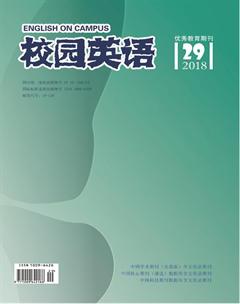AGeneralStudyofLanguageDiversitiy
【Abstract】English, being the international language, plays a dominating role among various languages spoken in the worldwide. It makes communication easier, while it also threatens the linguistic diversity. Each language represents a special culture as well as a special identity. In order to protect linguistic diversity, several factors need to be taken into consideration. This passage is a general introduction of language diversity as well as the significance of protection.
【Key words】Linguistic diversity; vitality
【作者簡介】张婷婷,云南师范大学商学院。
As for communication, English is the most important language in the world as the result of British colonial power in the nineteenth century and the leadership of the US in the twentieth century. English is also the main language of science and technology in the world and its spread is advancing in many countries and regions where English has not been traditionally spoken. Therefore, English has also been considered a threat for linguistic diversity.
Linguistic diversity in the world today is an issue of growing social importance becausea majority of all living languages are threatened in their continued existence.
How they can be sustained is a matter of study and debate. Nowadays there are 5,000 to 7,000 languages in the world. It is difficult toknow the exact number of languages because the distinction between a language and adialect is not always clear. In fact languages are not isolated entities and in many cases there are no clear boundaries between them, it is rather a continuum that extends along ageographical area.
As we have already seen there are many languages ‘at risk in the world. Krauss (1992, 1995) estimates that50% of languages could die in the next 100 years and that in the long term 90% of theworld languages could die. The demographic factor is crucial when looking at thevitality of a language, but the vitality of a language is a complex construct which is also related to other factors.
The vitality of a language is related to several factors. According to Giles et al.the relative ethnolinguistic vitality that a specific language group has as compared toother language groups is based on its demography, its institutional control and its status.From a social psychological perspective, Giles et al. consider that the vitality of an ethnolinguistic group is “that which makes a group likely to behave as a distinctiveand active collective entity in intergroup situations” (Giles et al. 1977: 308). Thismeansthat the more vitality a group has, the more chance it has surviving and thriving as agroup. So individuals want to belong to such a strong and healthy group. There arethreefactors that influence this vitality: status, demography and institutionalsupport.
Taking into account the large number of endangered languages and therelationshipbetween language loss and power, discrimination and marginalization many scholarsfeel the need to establish policies to maintain language diversity. Crystal givesfive reasons to justify the importance of language diversity:
i. Ecological diversity.
ii. Languages express identity
iii. Languages are repositories of history
iv. Language contribute to the sum of human knowledge
v. Languages are interesting in themselves
A free language economy could mean the extinction of many languages and therefore language planning is essential.Language planning refers to ‘deliberate efforts toinfluence the behavior of others withrespect to acquisition, structure or functionalallocation of their language codes. Cooper breaks down the process into threecomponents: status,corpus, and language planning.
Status planning involves the allocation of language to given social functions.Corpus planning involves the technical process of creating new forms, modifying oldones or selecting an alternative.To these two well established concepts in the literature, Cooper has added a third,acquisition planning, which is involved in those cases in which the goal is to expand thenumber of speakers of a language, either in a country or even globally, for examplethrough language teaching.
A well known analogy between linguistic and ecological diversity is the ‘language garden analogy proposed by Garcia. According toGarcia it would be dull and boring to travel around the world and see that all gardensare of the same one-colour flower.The variety of flowers of different shapes, sizes andcolours makes our visual and aesthetic experience rich and enjoyable. Linguisticdiversity also makes the world more interesting and colourful but as in the case offlowers it makes the garden more difficult to tend. Some flowers (and some languages, such as English),spread very quickly and others need extra care and protection. Language diversity requires planning and care and involves some actions.
參考文献:
[1]Crystal,D.English as a Global Language[M].Cambridge:Cambridge University Press,1997.

